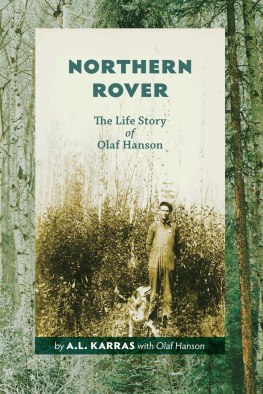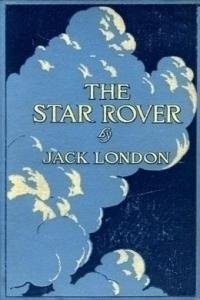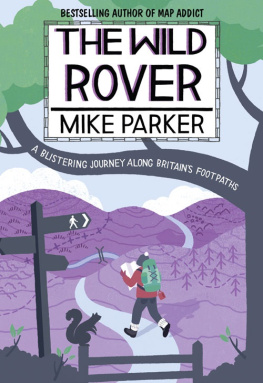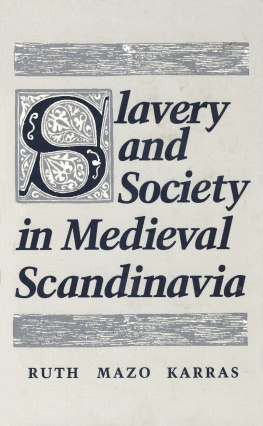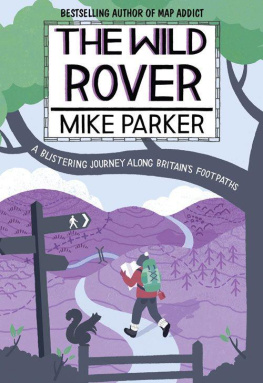A.L. Karras - Northern Rover
Here you can read online A.L. Karras - Northern Rover full text of the book (entire story) in english for free. Download pdf and epub, get meaning, cover and reviews about this ebook. year: 2008, publisher: Athabasca University Press, genre: Non-fiction. Description of the work, (preface) as well as reviews are available. Best literature library LitArk.com created for fans of good reading and offers a wide selection of genres:
Romance novel
Science fiction
Adventure
Detective
Science
History
Home and family
Prose
Art
Politics
Computer
Non-fiction
Religion
Business
Children
Humor
Choose a favorite category and find really read worthwhile books. Enjoy immersion in the world of imagination, feel the emotions of the characters or learn something new for yourself, make an fascinating discovery.
- Book:Northern Rover
- Author:
- Publisher:Athabasca University Press
- Genre:
- Year:2008
- Rating:4 / 5
- Favourites:Add to favourites
- Your mark:
- 80
- 1
- 2
- 3
- 4
- 5
Northern Rover: summary, description and annotation
We offer to read an annotation, description, summary or preface (depends on what the author of the book "Northern Rover" wrote himself). If you haven't found the necessary information about the book — write in the comments, we will try to find it.
Northern Rover — read online for free the complete book (whole text) full work
Below is the text of the book, divided by pages. System saving the place of the last page read, allows you to conveniently read the book "Northern Rover" online for free, without having to search again every time where you left off. Put a bookmark, and you can go to the page where you finished reading at any time.
Font size:
Interval:
Bookmark:
NORTHERN ROVER
THE LIFE STORY
OF
OLAF HANSON
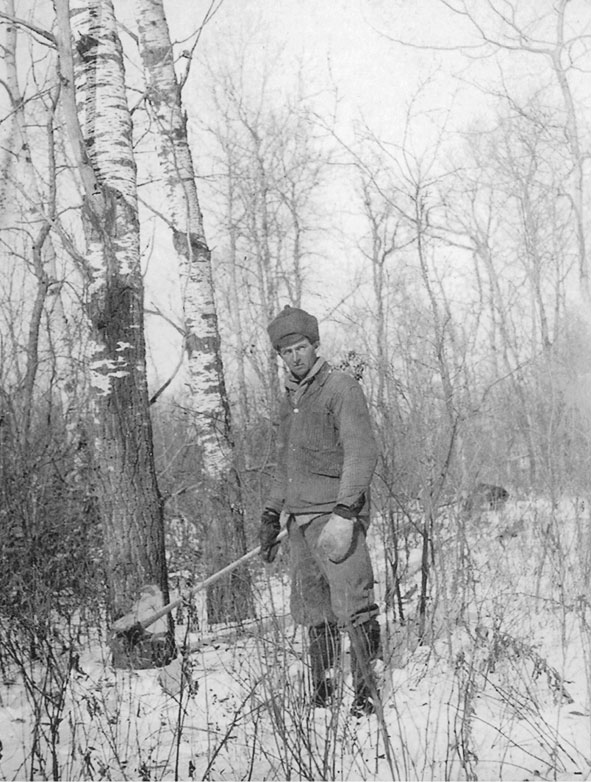
NORTHERN ROVER
THE LIFE STORY
OF
OLAF HANSON
by A.L. KARRAS
with OLAF HANSON

2008 estates of A.L. Karras and Olaf Hanson
Published by AU Press, Athabasca University1200, 10011 109 StreetEdmonton, AB T5J 3S8
Library and Archives Canada Cataloguing in Publication
Karras, A. L. Northern rover : the life story of Olaf Hanson / A.L. Karras.
Includes index. Also available in electronic format. ISBN 978-1-897425-01-5
1. Hanson, Olaf. 2. FisheriesSaskatchewanLove RegionHistory. 3. Frontier and pioneer lifeSaskatchewanLove Region. 4. Hanson Lake Road (Sask.)History. 5. Outdoor lifeSaskatchewanLove Region History. 6. Love Region (Sask.)History. 7. FishersSaskatchewan Biography. 8. TrappersSaskatchewanBiography. 9. Love Region (Sask.)Biography. I. Title.
SD129.H35K37 2008 971.24'202092 C2008-902619-5
Printed and bound in Canada by AGMV Marquis
Cover and book design by Virginia Penny, Interpret Design Inc.
Maps prepared by Dwight Allott
Cover photograph of trees by Wayne Shiels, Lone Pine Photo
Photographs in the book are courtesy of Marylin Hanson Deschamps, except for Saskatchewan Archives Board, p. 10: R-A4484 and p. 188: R-B7321-1.
Please contact AU Press, Athabasca University at aupress@athabascau.ca for permissions and copyright information.
Frontispiece: It was October of 1919 when Hanson first went into northern Saskatchewan to hunt and trap for a living.
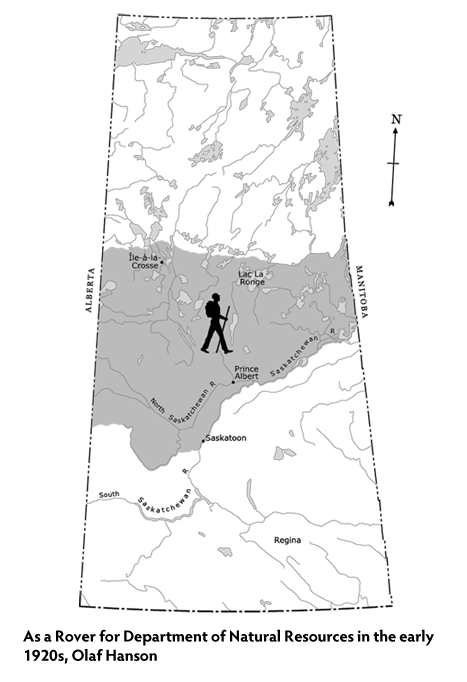
INTRODUCTION
P erhaps more than any other in Canada, Saskatchewans provincial flag depicts the geographic realities of the provincea brilliant lower yellow band represents the southern prairies while the upper green background symbolizes Saskatchewans boreal forest. A prairie lily seemingly connects the two regions. Likewise, the political geometry of Saskatchewans mapped borders suggests an equally simple descriptiona near-rectangle situated squarely in the centre of western Canada, a place, at least according to the map, defined as much by longitude and latitude as by the reality of the sharply changing seasons. To most who have traveled the province, and even to most who live there today, the enduring image of Saskatchewan is that of vast grain fields slowly rusting to gold under cloudless summer skies. After all, the twentieth century was to be Canadas Century, and that hope was firmly rooted in the southern grasslands and variably rich soil that made up the Canadian prairies. Once broken, the crops that would spring from the prairies would, it was believed, bring wealth those who toiled under those brilliant summer skies For a while at least, the hope of those who settled the prairies was shared by the nation as a whole.
But there was another Saskatchewan. And there was, and remains another brand of speculator, another type of homesteader in Saskatchewan, and indeed in Canadian history. Not all who came to Saskatchewan in the early twentieth century came for the agricultural promise of the prairies. And of those who did come to farm, take up land, make a go of homesteading on the prairie, not all stayed to live out that dream. The powerful forces of economics and environment drove many from the land in the 1920s and 1930s. And as some were driven out by hardship and crisis, others were lured away by a more northern promise of adventure, wealth, and independence.
Life on the prairies seemed limited by seasons and surveyed homesteads. The economic potential of the prairies was similarly fettered by inequitable freight rates and fluctuating commodity prices. At the same time, the mystery of the Canadian Shield, the myriad of unnamed rivers, rocky portages, and the seemingly unending muskeg were simply too great an attraction. The north seemed boundless, a wild space then undefined by grid roads and survey stakes. In the early twentieth century, indeed until well after the Second World War, Prince Albert marked the jumping off point for so many southerners, those newcomers drawn to the north by the promise of a boreal adventure. This, and the possibility of wealth that could be gained from the land and its resourcesfish, furs, and possibly mineralsproved to be a powerful motivator for many. The lure of the north, the unknown, helped many overcome the agrarian inertia of settled life on a prairie homestead.
Olaf Hanson one of these northern newcomers. For him, the trip north to Prince Albert in the years after the First World War changed his world. Unwittingly and without any great scheme or plan, he became part of or larger pattern of newcomer experience that came to shape regions, to create a new and dynamic sense of place in northern Saskatchewan. He did not venture north with a clear intent to direct the change around him, but rather he came north for far more selfish reasons. His story, the narrative that follows, demonstrates how an ever-evolving and developing sense of place in the north worked to shape his perception of northern Saskatchewan. That perception is of lasting importance for us today as we struggle to learn more about the modern north, and how that region came to shape a province, and ultimately a nation.
This is not the story of a mans triumph over nature. Olaf Hanson did not conquer the seasons or tame the northern environment, but rather he came to understand and adapt in a place he came to call home. In doing so, Olaf Hanson became immortalized not by this narrative, but by the road which bears his namethe Hanson Lake Roadthe Number 106 Highway that today connects southern Saskatchewan to Creighton and Flin Flon Manitoba, and then on through other numbered highways to the provincial norths of both Saskatchewan and Manitoba. On its southern end, the Hanson Lake Road connects with the Number 55 Highway, the northern-most eastwest paved highway in Saskatchewan even today. These important routes serve as a demarcation line between Saskatchewans north and south, between two separate environments, between two worlds really.
In the years that followed the Second World War, Saskatchewans Co-operative Commonwealth Federation ( ccf ) government tried to define the modern region in terms of compulsory fish and fur marketing programs. When Hanson first arrived, however, the region was a much more independent place. Before the war, individual experience was shaped not by provincial programs or southern control of the norths vast places and resources, but rather by the more immediate contrast of seasons, the cycles of not only climate, but of the flora and fauna that defined the region. These elements drew him and so many other others to the north.
Olaf Hanson was by no means unique. Hundreds, if not thousands, of others like him were drawn to the region by the same promise of adventure, the hope of wealth, and the seemingly limitless forest and its accompanying maze of rivers. After the First World War it was not uncommon for Saskatchewans Department of Natural Resources, and especially the Game Branch, to receive inquiries from adventure-seekers as far away as England and Scotland. Most wanted maps of the region, a description of the resources contained therein, and an explanation of the limits the provincial or federal government put on ones activities in the region. Was the trapping really as good as some made it out to be? Could one find land and forest products enough to make a cabin and establish a new life in northern Saskatchewan? How far north would potatoes grow? These were the questions upon which a northern life hinged, after all, and many wanted in on it.
Font size:
Interval:
Bookmark:
Similar books «Northern Rover»
Look at similar books to Northern Rover. We have selected literature similar in name and meaning in the hope of providing readers with more options to find new, interesting, not yet read works.
Discussion, reviews of the book Northern Rover and just readers' own opinions. Leave your comments, write what you think about the work, its meaning or the main characters. Specify what exactly you liked and what you didn't like, and why you think so.

